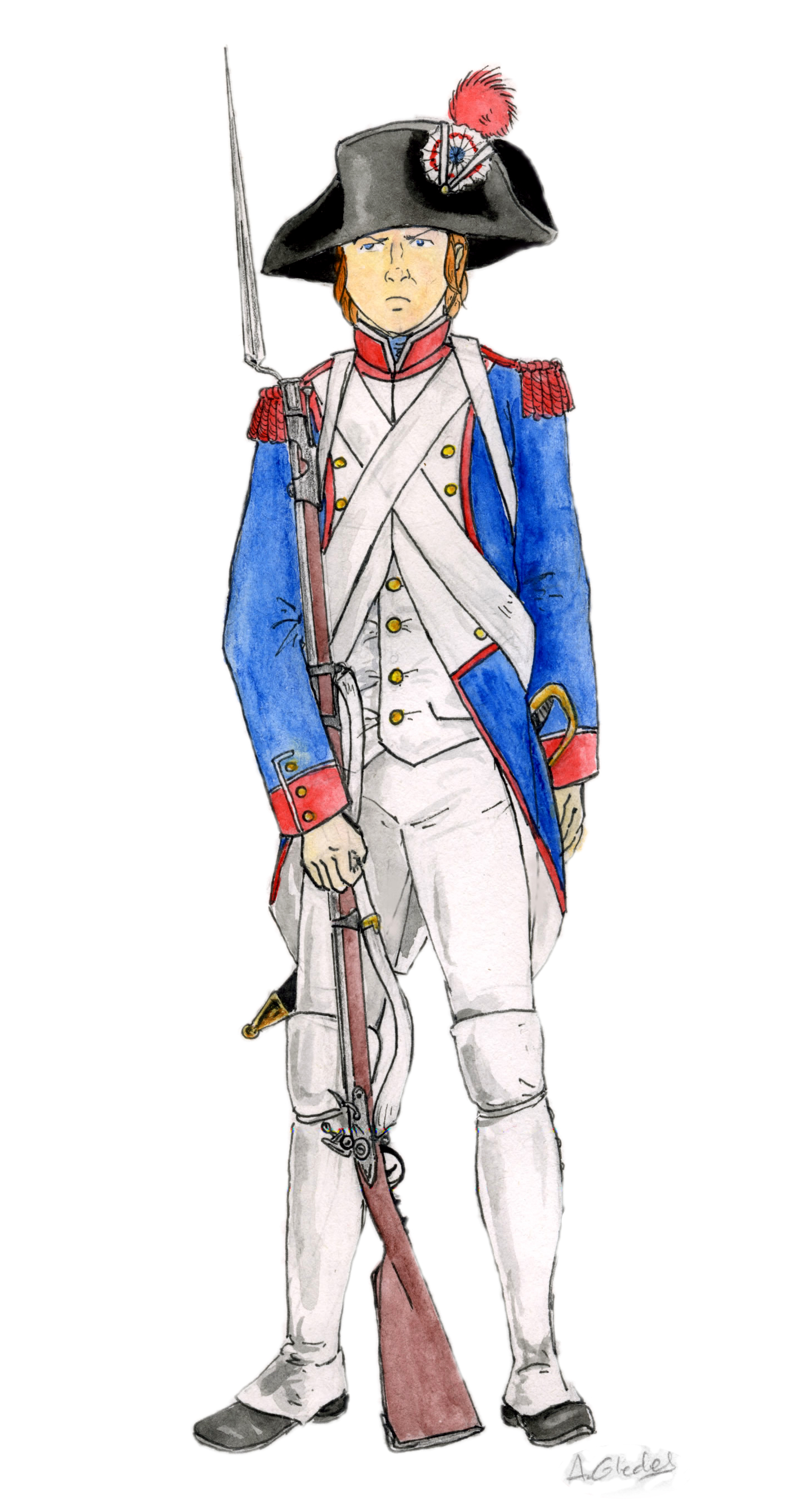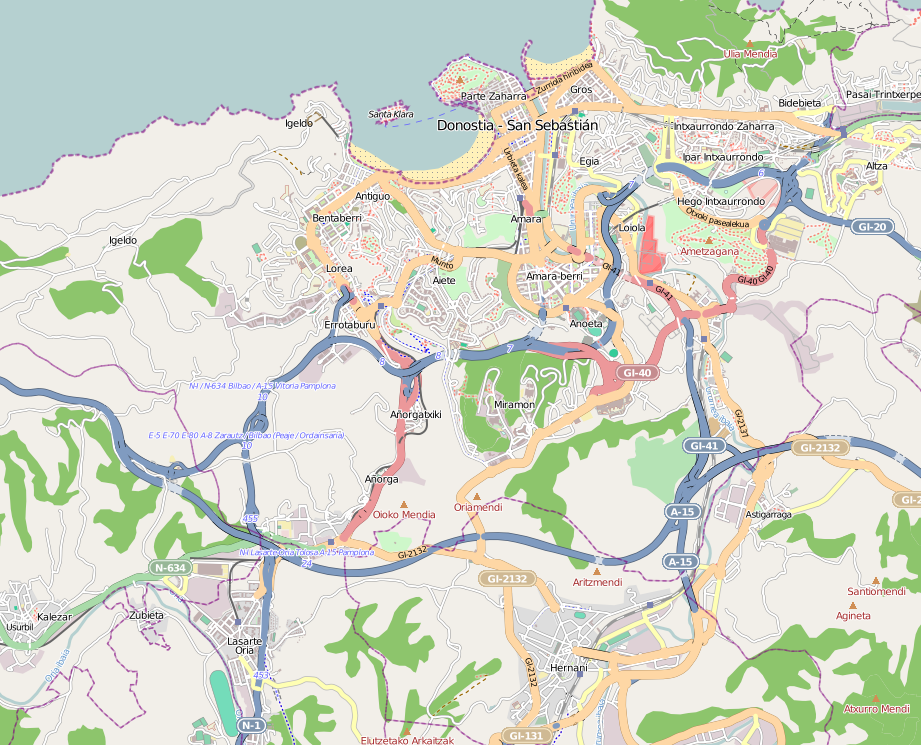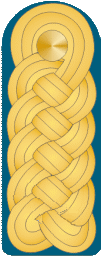|
Jacques Léonard Muller
Jacques Léonard Muller (11 December 1749 – 1 October 1824) commanded the '' Army of the Western Pyrenees'' and the '' Army of the Rhine'' during the French Revolutionary Wars. He was a product of the French Royal Army which he joined in 1765. He became a captain in 1791 and soon formed a unit from the disbanded Swiss regiments of the old army. He fought at Jemappes and then transferred to the War Office. Promoted to general officer in July 1793 he was appointed chief of staff to the ''Army of the Pyrenees''. In October 1793 he assumed command of that army despite being outranked by ten other generals. He immediately set about providing a good organization for his motley host. A major Spanish attack on the Sans Culottes Camp was repulsed in February 1794. Muller was finally promoted to general of division in April 1794. In July and August his army captured the Baztan Valley and San Sebastián. He soon resigned his command and was replaced by Bon-Adrien Jeannot de Moncey. He t ... [...More Info...] [...Related Items...] OR: [Wikipedia] [Google] [Baidu] |
Thionville
Thionville (; ; german: Diedenhofen ) is a city in the northeastern French department of Moselle. The city is located on the left bank of the river Moselle, opposite its suburb Yutz. History Thionville was settled as early as the time of the Merovingians. After the fall of the Western Roman Empire, the region was inhabited by the Germanic Alamanni. It was known in the Latin of that era as ''Theudonevilla'' or ''Totonisvilla''. King Pepin the Short had a royal palace constructed here. The Synod of Thionville was held here beginning on February 2, 835. It reinstated Emperor Louis the Pious and reversed his former conviction on crimes — none of which he actually committed — and deposed the Archbishop of Rheims, Ebbo. The Synod was composed of 43 bishops. On February 28, 835, in Mainz, Ebbo admitted that Louis had not committed the crimes of which he had been indicted and for which he had been deposed as Holy Roman Emperor. From the 10th century onward, the area was ... [...More Info...] [...Related Items...] OR: [Wikipedia] [Google] [Baidu] |
Captain (armed Forces)
The army rank of captain (from the French ) is a commissioned officer rank historically corresponding to the command of a company of soldiers. The rank is also used by some air forces and marine forces. Today, a captain is typically either the commander or second-in-command of a company or artillery battery (or United States Army cavalry troop or Commonwealth squadron). In the Chinese People's Liberation Army, a captain may also command a company, or be the second-in-command of a battalion. In some militaries, such as United States Army and Air Force and the British Army, captain is the entry-level rank for officer candidates possessing a professional degree, namely, most medical professionals (doctors, pharmacists, dentists) and lawyers. In the U.S. Army, lawyers who are not already officers at captain rank or above enter as lieutenants during training, and are promoted to the rank of captain after completion of their training if they are in the active component, or aft ... [...More Info...] [...Related Items...] OR: [Wikipedia] [Google] [Baidu] |
French Generals
French (french: français(e), link=no) may refer to: * Something of, from, or related to France ** French language, which originated in France, and its various dialects and accents ** French people, a nation and ethnic group identified with France ** French cuisine, cooking traditions and practices Fortnite French places Arts and media * The French (band), a British rock band * "French" (episode), a live-action episode of ''The Super Mario Bros. Super Show!'' * ''Française'' (film), 2008 * French Stewart (born 1964), American actor Other uses * French (surname), a surname (including a list of people with the name) * French (tunic), a particular type of military jacket or tunic used in the Russian Empire and Soviet Union * French's, an American brand of mustard condiment * French catheter scale, a unit of measurement of diameter * French Defence, a chess opening * French kiss, a type of kiss involving the tongue See also * France (other) * Franch, a surna ... [...More Info...] [...Related Items...] OR: [Wikipedia] [Google] [Baidu] |
Michel Ney
Michel Ney, 1st Duke of Elchingen, 1st Prince of the Moskva (; 10 January 1769 – 7 December 1815), was a French military commander and Marshal of the Empire who fought in the French Revolutionary Wars and the Napoleonic Wars. He was one of the original 18 Marshals of the Empire created by Napoleon I. He was known as Le Rougeaud by his men; Napoleon characterized him as "le Brave des braves (the Bravest of the Brave), a real paladin in the field, a braggart without judgment and decision in the workroom and after all is said, a Don Quixote." Early life Ney was born in the town of Sarrelouis, in the French province of the Three Bishoprics, along the French–German border. He was the second son of Pierre Ney (1738–1826), a master cooper and veteran of the Seven Years' War, and his wife Marguerite Greiveldinger. He was the paternal grandson of Matthias Ney (1700–1780) and wife Margarethe Becker (d. 1767), and the maternal grandson of Valentin and wife Margaretha D ... [...More Info...] [...Related Items...] OR: [Wikipedia] [Google] [Baidu] |
Army Of The Danube
The Army of the Danube (french: Armée du Danube, links=no) was a field army of the French Directory in the 1799 southwestern campaign in the Upper Danube valley. It was formed on 2 March 1799 by the simple expedient of renaming the Army of Observation, which had been observing Austrian movements on the border between French First Republic and the Holy Roman Empire. It was commanded by General Jean-Baptiste Jourdan, 1st Comte Jourdan (1762–1833). The formation of the army was part of the French Directory's long term strategy to undermine Habsburg influence in the Holy Roman Empire, and, conversely, to strengthen French hegemony in central Europe after the wars of the First Coalition and the Treaty of Campo Formio in 1797. Despite the Treaty, Austria and France remained suspicious of each other's motives, and the purpose of the Army of the Observation was to watch for Austrian border transgressions. Understanding that the negotiations at the Congress of Rastatt were going ... [...More Info...] [...Related Items...] OR: [Wikipedia] [Google] [Baidu] |
Étienne Deprez-Crassier
Jean Étienne Philibert de Prez de Crassier or Étienne Desprez-Crassier (18 January 1733 – 6 July 1803) was a French political and military leader in the early years of the French Revolutionary Wars. Despite being from the minor nobility, he entered the French Royal Army as a cadet at the age of 12 because of his family's poverty. He fought in the War of the Austrian Succession and the Seven Years' War, becoming a colonel in 1785 and retiring two years later. Voltaire lent him the money needed to recover the Deprez family property. He was elected to the Estates General as a nobleman in 1789. After being promoted to lieutenant general he led a division at Valmy in 1792. He became commander of the ''Army of the Rhine'' and '' Army of the Western Pyrenees''. Imprisoned during the Reign of Terror, he was released and restored to his former rank but retired in 1796. Career Deprez-Crassier was promoted ''maréchal de camp'' (brigadier general) on 1 March 1791. While leading 600 troops ... [...More Info...] [...Related Items...] OR: [Wikipedia] [Google] [Baidu] |
Names Inscribed Under The Arc De Triomphe
The following is a list of the 660 names inscribed under the Arc de Triomphe, in Paris. Most of them represent generals who served during the French First Republic (1792–1804) and the First French Empire (1804–1815). Underlined names signify those killed in action. Additionally, the names of specific armies are listed, grouped together by the four compass facades of the arch: North (northern France, lower Rhine, Netherlands), East (Central Europe, Switzerland, Italy), South (Mediterranean Europe, Egypt, southern France) and West (Pyrenees, western France, notable units). Related list: Battles inscribed on the Arc de Triomphe. File:Paris Arc de Triomphe inscriptions 2.jpg, Northern pillar Armies of northern France, the lower Rhine and the Netherlands. File:Paris Arc de Triomphe inscriptions 3.jpg, Eastern pillar Armies of Central Europe, Switzerland and Italy. File:Paris Arc de Triomphe inscriptions 7.jpg, Southern pillar Armies of Mediterranean Europe, Egypt and souther ... [...More Info...] [...Related Items...] OR: [Wikipedia] [Google] [Baidu] |
Napoleonic Wars
The Napoleonic Wars (1803–1815) were a series of major global conflicts pitting the French Empire and its allies, led by Napoleon I, against a fluctuating array of European states formed into various coalitions. It produced a period of French domination over most of continental Europe. The wars stemmed from the unresolved disputes associated with the French Revolution and the French Revolutionary Wars consisting of the War of the First Coalition (1792–1797) and the War of the Second Coalition (1798–1802). The Napoleonic Wars are often described as five conflicts, each termed after the coalition that fought Napoleon: the Third Coalition (1803–1806), the Fourth (1806–1807), the Fifth (1809), the Sixth (1813–1814), and the Seventh (1815) plus the Peninsular War (1807–1814) and the French invasion of Russia (1812). Napoleon, upon ascending to First Consul of France in 1799, had inherited a republic in chaos; he subsequently created a state with stable finan ... [...More Info...] [...Related Items...] OR: [Wikipedia] [Google] [Baidu] |
Army Of The Alps
The Army of the Alps (''Armée des Alpes'') was one of the French Revolutionary armies. It existed from 1792–1797 and from July to August 1799, and the name was also used on and off until 1939 for France's army on its border with Italy. 1792–1797 The Army of the Alps was created by a decree of the French Convention on 1 October 1792 which divided the Army of the Midi into the Army of the Alps and the Army of the Pyrenees. On 1 November 1793 it was itself divided into the Army of Savoy and the Army of Italy by a ''conseil exécutif'' decree. Following the decrees of 27–29 November 1793 which brought Savoy into the First French Republic under the name of Mont-Blanc department the Army of Savoy was renamed the Army of the Alps, before having the Army before Lyon split off from it between 8 August and 29 October 1793. The Army of the Alps was suppressed by a decree of 21 August 1797 (21 Fructidor year V), put into effect on 13 September, with its men and theatre transferre ... [...More Info...] [...Related Items...] OR: [Wikipedia] [Google] [Baidu] |
Bon-Adrien Jeannot De Moncey
Bon-Adrien Jeannot de Moncey (or Jannot de Moncey), 1st Duke of Conegliano (31 July 1754 – 20 April 1842) was a French military officer and a prominent commander in the French Revolutionary Wars and later a Marshal of the Empire during the Napoleonic Wars. He later became governor of the Hôtel des Invalides. MONCEY is one of the names inscribed under the Arc de Triomphe, on Column 33. Biography Moncey was born on 31 July 1754 in Palise or Moncey, Doubs. His father was a lawyer from Besançon. During his childhood, he twice enlisted in the French Army, but his father procured his discharge on both occasions. His desire was at last gratified in 1778, when he received a commission. Revolutionary and Napoleonic wars Moncey was a captain when, in 1791, he embraced the principles of the French Revolution. He won great distinction in the campaigns of 1793 and 1794 during the War of the Pyrenees, rising from the commander of a battalion to the commander-in-chief of the Army of ... [...More Info...] [...Related Items...] OR: [Wikipedia] [Google] [Baidu] |
San Sebastián
San Sebastian, officially known as Donostia–San Sebastián (names in both local languages: ''Donostia'' () and ''San Sebastián'' ()) is a city and municipality located in the Basque Autonomous Community, Spain. It lies on the coast of the Bay of Biscay, from the France–Spain border. The capital city of the province of Gipuzkoa, the municipality's population is 188,102 as of 2021, with its metropolitan area reaching 436,500 in 2010. Locals call themselves ''donostiarra'' (singular), both in Spanish and Basque. It is also a part of Basque Eurocity Bayonne-San Sebastián. The main economic activities are almost entirely service-based, with an emphasis on commerce and tourism, as it has long been one of the most famous tourist destinations in Spain. Despite the city's small size, events such as the San Sebastián International Film Festival and the San Sebastian Jazz Festival have given it an international dimension. San Sebastian, along with Wrocław, Poland, was th ... [...More Info...] [...Related Items...] OR: [Wikipedia] [Google] [Baidu] |
General Of Division
Divisional general is a general officer rank who commands an army division. The rank originates from the French (Revolutionary) System, and is used by a number of countries. The rank is above a brigade general, and normally below an army corps general. The rank is mostly used in countries where it is used as a modern alternative to a previous older rank of major-general or lieutenant-general. Specific countries Brazil The Brazilian rank ''general-de-divisão'' translates literally as "general of division", and is used by the army. This rank is equivalent to lieutenant-general. The air force equivalent is ''major-brigadeiro''(literally "major-brigadier"). The navy equivalent is ''vice-almirante'' (literally, vice-admiral) Chile The Chilean rank ''general de división'' translates literally as "general of division", and is used by the army. This rank is equivalent to lieutenant-general. The air force equivalent is ''general de aviación'' (literally "aviation general"). Thes ... [...More Info...] [...Related Items...] OR: [Wikipedia] [Google] [Baidu] |




.jpg)

